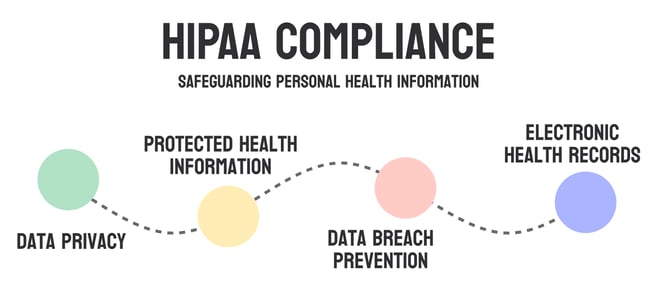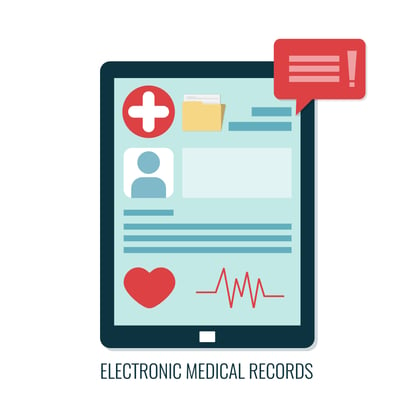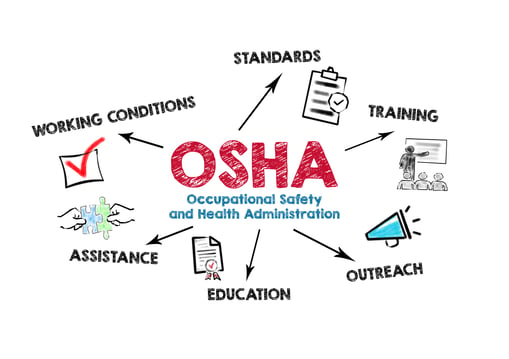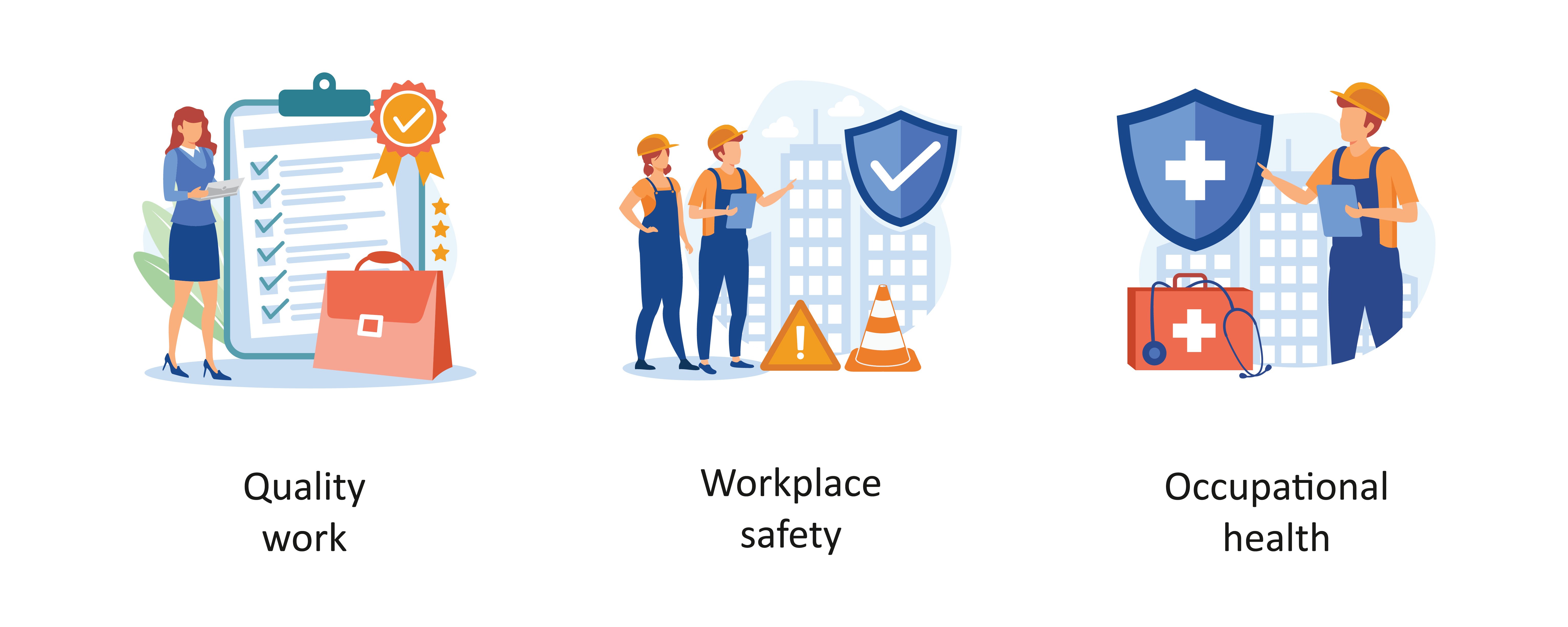Welcome to the world of compliance and privacy management, an area where every decision is influenced by a complex array of regulations, and the journey is continuously having the goal post moved away from being just in reach.
At the forefront of this discussion are two frequently misconstrued yet fundamentally distinct entities: the Health Insurance Portability and Accountability Act (HIPAA) and the complex domain of workplace records management. Whether you are an experienced professional in the healthcare or EHS/ESG sectors, or simply keen to understand how these regulations affect you and your workplace, this is for you.
Our goal is to help you unravel the nuances, distinctions, and clear differences between these critical areas.
Understanding HIPAA
HIPAA is a federal law enacted in 1996 that sets standards for the protection of sensitive patient health information. It applies to covered entities like healthcare providers, health plans, and healthcare clearinghouses, as well as their business associates who have access to patient information.
HIPAA's primary goal is to ensure that an individual's health information is properly protected while allowing the flow of health information needed to provide high-quality health care.

EMRs Under HIPAA
Electronic Medical Records (EMRs) are digital versions of patients' paper charts found in clinician offices, hospitals, and clinics. EMRs contain the medical and treatment history of the patients within one practice. Under HIPAA, EMRs are considered protected health information (PHI) and are subject to strict privacy and security regulations.
found in clinician offices, hospitals, and clinics. EMRs contain the medical and treatment history of the patients within one practice. Under HIPAA, EMRs are considered protected health information (PHI) and are subject to strict privacy and security regulations.
Healthcare providers must ensure that EMRs are accessible only to authorized individuals and are protected against unauthorized access or breaches.
Workplace Records in OSHA
Workplace records encompass a wide range of documentation related to employee health and safety (EHS), environmental compliance, and social governance (ESG). This includes records of employee exposure to hazardous materials, injury and illness reports, training records, and compliance with environmental regulations.

Employee & Occupational Health Recordkeeping Systems
Employee & Occupational Health Recordkeeping Systems are specialized platforms used by organizations to manage health and safety data related to their employees.
Unlike EMRs, these systems are not covered under HIPAA but are governed by other regulations like the Occupational Safety and Health Administration (OSHA) standards and the Americans with Disabilities Act (ADA). These systems help organizations track and manage workplace injuries, illnesses, exposures, and medical surveillance programs, ensuring compliance with regulatory requirements and supporting workplace safety and health initiatives.

Key Differences Between HIPAA and Workplace Records
Applicability and Scope
- HIPAA: Applies specifically to healthcare providers, health plans, healthcare clearinghouses, and their business associates. It focuses on the privacy and security of PHI.
- Workplace Records: Applies to employers and is concerned with documenting and managing health and safety information related to employees and occupational environments. It's regulated by agencies like OSHA.
Purpose and Use
- EMRs: Designed to provide comprehensive health information for clinical decision-making within a healthcare setting. They are patient-centric and detail the history of care and treatment over time.
- Employee & Occupational Health Recordkeeping Systems: Focus on tracking and managing health and safety data for regulatory compliance and workplace safety. These records are employee-centric but focus on occupational health and safety, not personal medical care.
Privacy and Security
- HIPAA: Requires stringent protections for PHI, including administrative, physical, and technical safeguards. Unauthorized disclosure of PHI can result in significant penalties.
- Workplace Records: While not governed by HIPAA, these records still require protection to ensure employee privacy and comply with other laws like OSHA regulations and the ADA. The focus is more on safety and regulatory compliance rather than patient privacy.
Navigating Compliance for EHS/ESG Professionals
For EHS/ESG professionals, navigating the complexities of HIPAA and workplace records requires a clear understanding of the regulatory landscape and the specific requirements of each domain. Here are some tips for managing these responsibilities effectively:
- Educate Your Team: Ensure that your team understands the differences between HIPAA and workplace records and the relevant compliance requirements.
- Implement Robust Policies: Develop and enforce policies that protect employee health information while ensuring compliance with both HIPAA (where applicable) and workplace safety regulations.
- Leverage Technology: Use secure and compliant software solutions for managing both EMRs (in healthcare settings) and Employee & Occupational Health Recordkeeping Systems.
- Stay Informed: Keep up to date with changes in regulations and best practices in both healthcare privacy and workplace safety and health.
Key Takeaways
- HIPAA vs. Workplace Records: Recognize the distinct applicability and scope of HIPAA, focusing on the privacy and security of PHI, versus workplace records that manage health and safety data under regulations like OSHA.
- Purpose and Use: Understand the patient-centric nature of EMRs under HIPAA for clinical decision-making, compared to the focus on occupational health and safety in employee & occupational health recordkeeping systems.
- Privacy and Security Requirements: While HIPAA demands stringent protections for PHI, workplace records also require safeguarding to comply with OSHA regulations and the ADA, emphasizing safety and regulatory compliance over patient privacy.
- Best Practices for Compliance: EHS/ESG professionals should educate their teams on the differences and compliance requirements, implement robust policies, leverage compliant software solutions, and stay informed on regulatory changes and best practices.
To Wrap Things Up
Navigating the intricate world of compliance and privacy management within the realms of HIPAA and workplace records management is essential for professionals across healthcare, EHS, and ESG sectors.
By understanding these areas, organizations can ensure they are compliant with the necessary regulations while safeguarding sensitive information.

